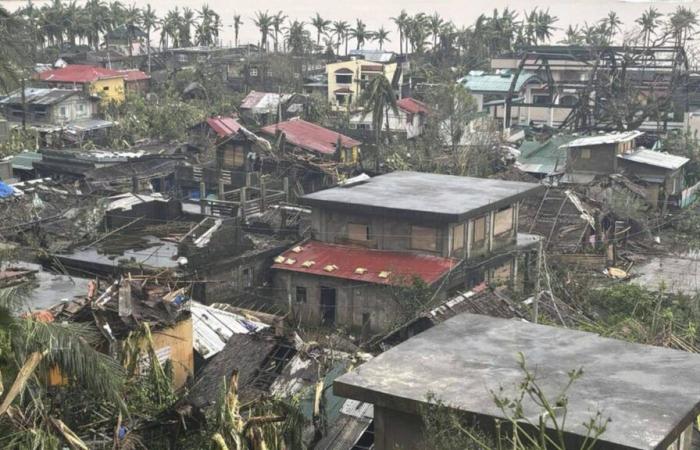More than 650,000 people fled their homes as the super typhoon approached, described as “potentially catastrophic and deadly” by the agency. Waves up to 14 meters high crashed onto the Catanduanes coastline as storm surges of more than three meters are likely to hit the capital Manila and other vulnerable coastal areas within 48 hours, warned the same source on Saturday.
“No casualties were reported, perhaps because people followed evacuation orders,” Roberto Monterola, head of Catanduanes province’s relief operations, said Sunday as the island’s cleanup is in progress. “All towns suffered damage, but those in the north (of the island) are expected to have more problems,” he added.
Photos shared on Panganiban Mayor Cesar Robles’ Facebook page show toppled power lines, damaged homes, trees and corrugated iron sheets littering the roads. “It’s still a little dangerous, there are still gusts of wind and a lot of debris,” Cesar Robles said in a message, assuring that he had never seen a typhoon “so powerful”.
Sixth storm in a month
“Before, we only received signal number three or four, but now the typhoons reach signal number five,” testified Marissa Cueva Alejandro, 36, referring to the weather service’s five-level wind warning system.
Man-yi is the sixth storm to hit the Philippines in less than a month. Previous attacks have killed at least 163 people, left thousands homeless, destroyed crops and killed livestock.
Scientists say climate change is increasing the intensity of storms, leading to heavier rains, flash floods and more violent gusts. Every year, around 20 major storms and deadly typhoons hit the Philippines or its surrounding waters, but it is rare for several such events to occur in a short period of time.
Man-yi is expected to “weaken slightly” into a typhoon before hitting Luzon – the most populous island and economic engine of the country where Manila is located – on Sunday afternoon, according to forecasters.
Robert Tancino, a paramedic in Tiwi municipality in Albay province, which faces Catanduanes, said his area appeared largely unscathed, saying he had not seen any “damage to houses.”
Deserted hotels
The weather agency issued a Level 2 alert in several provinces on the eastern coast of Luzon, where Man-yi is expected to make landfall for the second time. But “some of our compatriots are hard-headed. They don’t believe us until the typhoon arrives,” Geofry Parrocha, communications manager of the disaster management agency of the municipality of Dipaculao, told AFP.
Tourists have left the seaside resorts. “Our rooms are deserted,” lamented Irene Padeo, responsible for reservations at a hotel in Baler, in the same province of Aurora.
Based on its predicted trajectory, Man-yi is expected to cross north of Manila and sweep across the South China Sea on Monday. Man-yi hits the Philippines late in the typhoon season, with most cyclones developing between July and October.
Earlier this month, four storms formed simultaneously in the Pacific basin. The Japanese Meteorological Agency said on Saturday that it was the first time such a phenomenon had been observed in November since its records began in 1951.






